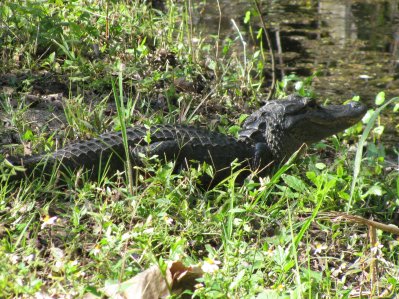|
| |
EDITORIAL: Wildlife Disturbanceby Pete Corradino It might be difficult to understand what transpires in the mind of a person who chooses to ride a manatee, to snatch a wild alligator from its resting place or wade into the surf to pat a dolphin. Although incidents are rare, locals, tourists and tour operators alike have run afoul of common sense as well as state and federal laws that protect our wildlife from harm. It might be difficult to understand what transpires in the mind of a person who chooses to ride a manatee, to snatch a wild alligator from its resting place or wade into the surf to pat a dolphin. Although incidents are rare, locals, tourists and tour operators alike have run afoul of common sense as well as state and federal laws that protect our wildlife from harm.Florida SEE’s Certification and Recognition Program seeks to educate tour operators by teaching those in need and rewarding those that adhere to best practices, but like a curious child, we’re sometimes left asking “why”. Why can we do this? Why can’t we do that? It’s entirely fair to ask and by doing so, it becomes a teachable moment on tour when we instruct eco-tourists in turn. Criteria #106 – “Visitation does not disrupt foraging or breeding” • Why is that bear tearing apart that rotting cypress stump? It’s looking for grubs and other insects. It’s fine to watch from a safe distance. Just keep your distance and respect their space. • Why are bird rookeries off limits to tours? While birds on the nest tend to hold their ground longer than other birds to protect their young, once flushed, eggs or chicks are at risk to predators and/or the elements. Criteria #108 – “Operation does not harass wildlife” (e.g., cornering, chasing, flushing, bating, or pishing) • Always assure wildlife has the appropriate amount of space to escape if necessary. • A bird in the bush is worth leaving there. A flushed bird in hiding spends energy escaping as does chased wildlife. • Bating wildlife alters foraging behavior and can cause dependence on people. Wildlife is capable of feeding independent of humans. The temptation of luring wildlife like bears to the antiquated garbage dumps, deer to salt licks and raccoons to feeding stations creates a harmful and unnatural setting. • Pishing is creating a “Pish” sound that “attracts” some small passerine birds. What it really does is annoys them by imitating an alarm call. They seek the source of the alarm. It disrupts their normal behavior and should be avoided. Criteria #110 – “Operator does not handle threatened or endangered wildlife without the appropriate permits. “ • Go figure. It’s not legal to ride a manatee. Yes, this summer a woman in Pinellas County spotted a manatee close to shore, waded out and rode Florida’s state aquatic mammal. While posing little physical threat to the animal, this tourist most certainly disrupted the wild animal’s behavior. She had no idea it was illegal to do so. She probably had no idea that manatees mate in shallow water. No doubt she wouldn’t try riding an alligator. • Found an endangered Gopher Tortoise while on tour? With the exception of life threating circumstances, handling of all wildlife should be avoided. If the turtle is crossing the road, help it in the direction it was heading. Otherwise, observe and enjoy from a distance. The Certification and Recognition Program has 234 criteria (not all are applicable to every tour operator). If you have questions, would like to request a copy, apply for certification or train to become a certified Florida SEE assessor, please email certification@floridasee.org. Take me back to the newsletter | |
| The Florida SEE Grapevine - December, 2012 |